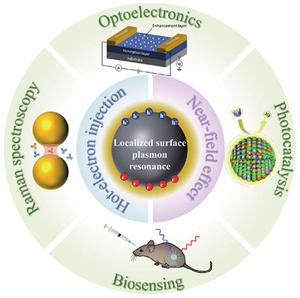Frontiers of Physics ( IF 6.5 ) Pub Date : 2024-07-03 , DOI: 10.1007/s11467-024-1413-8 Jiangtong Su , Xiaoqi Hou , Ning Dai , Yang Li

|
Localized surface plasmon resonance (LSPR) is an intriguing phenomenon that can break diffraction limitations and exhibit excellent light-confinement abilities, making it an attractive strategy for enhancing the light absorption capabilities of photodetectors. However, the complex mechanism behind this enhancement is still plaguing researchers, especially for hot-electron injection process, which inhibits further optimization and development. A clear guideline for basic physical model, enhancement mechanism, material selection and architectural design for LSPR photodetector are still required. This review firstly describes the mainstream understanding of fundamental physical modes of LSPR and related enhancement mechanism for LSPR photodetectors. Then, the universal strategies for tuning the LSPR frequency are introduced. Besides, the state-of-the-art progress in the development of LSPR photodetectors is briefly summarized. Finally, we highlight the remaining challenges and issues needed to be resolved in the future research.
中文翻译:

局域表面等离子体共振增强光电探测器:物理模型、增强机制及应用
局域表面等离子体共振(LSPR)是一种有趣的现象,它可以打破衍射限制并表现出优异的光限制能力,使其成为增强光电探测器光吸收能力的有吸引力的策略。然而,这种增强背后的复杂机制仍然困扰着研究人员,特别是对于热电子注入过程,这阻碍了进一步的优化和发展。局域表面等离子体共振光电探测器的基本物理模型、增强机制、材料选择和架构设计仍需要明确的指导方针。本文首先介绍了局域表面等离子体共振基本物理模式的主流理解以及局域表面等离子体共振光电探测器的相关增强机制。然后,介绍了调节局域表面等离子体共振频率的通用策略。此外,还简要总结了局域表面等离子体共振光电探测器发展的最新进展。最后,我们强调了未来研究中仍存在的挑战和需要解决的问题。











































 京公网安备 11010802027423号
京公网安备 11010802027423号